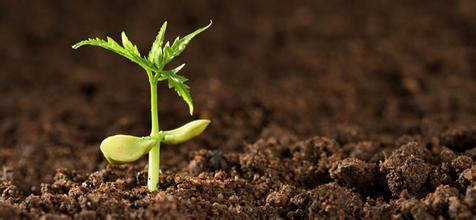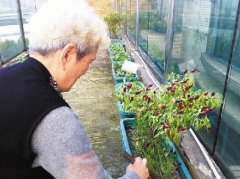The growing conditions required for green plants planted in flower beds, the influence of soil ph on crops
The key to successful and problem-free gardening is to choose the plants that best suit your garden conditions. Plan your home garden to match the most important functions of your property-sunlight and soil. Plants rely on light as an energy source for growth, flowers and fruits.
The amount of sunlight received by the garden bed determines what we can grow. Soil management is essential for successful gardening. Check soil fertility, pH value and water content to guide you on how to prepare and maintain flower beds.
Sun requirements: plants adapt to different sunlight in order to achieve the best growth, flowering and fruit. Choose vegetables, flowers, perennials and herbs in your home garden and carefully observe the daytime and seasonal sunshine. Soil, water, temperature and light interact to provide different microclimates for your garden. Plants are marked into three groups according to their light requirements.
Soil testing: know your soil before deciding where to plant and where to plant. Explore around your yard and choose the place where soil texture and drainage are best suited for gardening. Soil samples are collected for testing and testing is carried out at the depth of the plant. The most critical indicators to be examined are pH and fertility.
PH value is a measure of acidity or alkalinity, which determines which nutrients in the soil can be used by plants. Depending on the pH value of the soil, nutrients are available, unavailable or almost toxic. The pH value ranges from 0 to 14, of which 7 is neutral. A pH value below 7 indicates that the soil is acidic, while 7 indicates alkalinity. The change of each unit of pH value is 10 times the difference of acidity or alkalinity. For example, a soil with a pH of 6 is 10 times more alkaline than a soil with a pH of 5. The nutrient utilization efficiency of alkaline soil decreased. Most plants grow well in slightly acidic to almost neutral soils, with pH values between 6 and 7.5. Some plants, such as blueberries, adapt to acidic soil. It takes time to change the soil pH, and maintaining the preferred pH value of the garden means monitoring the soil pH value whenever a new garden bed is prepared. You can adjust the pH value, or choose plants that thrive under the natural pH of the garden soil. When making changes, please consider your garden soil type (sandy, loam or clay).
Fertility means that the soil provides plants with the necessary nutrients to make them grow, blossom, grow and stay healthy. Carbon, oxygen and hydrogen come from water and carbon dioxide in the air. The three main elements of soil modification found in commercial fertilizers are nitrogen (N), phosphorus (P) and potassium (K). Calcium (Ca), magnesium (Mg), sulfur (S), iron (Fe), manganese (Mn), zinc (Zn), copper (Cu), boron (Bo) and molybdenum (Mo) are required trace elements. Soil pH affects the balance and availability of nutrients and beneficial organisms. Plants adapt to different levels of soil fertility and show healthy to abnormal growth according to their growth conditions.

- Prev

Kitchen waste fertilizer utilization plan, kitchen waste organic fertilizer growing vegetables is environmentally friendly and healthy
With the advent of a new way to deal with kitchen waste, through the "thick soil planting method" to transform raw food waste and fallen leaves into plant available nutrients, not only solve the problem of raw food waste and the removal of rice straw, but also grow vegetables with zero detection of pesticides. The problem of garbage is becoming more and more serious.
- Next

What are the effects of Taiwan red quinoa and what are the health benefits? How to eat red quinoa is better
How to eat Taiwan red quinoa? Taiwan red quinoa is usually cooked with brown rice or white rice, while quinoa in Europe and the United States is mostly cooked and cooked with fruits and vegetables to make a salad. The red quinoa sold on the market can be divided into shelled and shelled quinoa, showing brown.
Related
- A course of planting techniques and methods on how to grow carrots
- How to plant the latest tulips?
- Is it better to pick tea in the morning or in the afternoon? When is the best time for tea to be picked? what is the third or fifth tea?
- Launch Yuanxiao Happy combination Haocha + Tea Yuan healthy Taste
- Penghu Tourism "Fireworks 20 Parade with You"
- 2022 West Lake Happiness holds "Digital Revitalization Voucher" and draws iphone13 and laptop.
- Banqiao Fuzhou social houses are designed to change start-up combined with police elimination to create a safe and livable environment
- The convenient measure of "mechanical weeding" in Xinbei has been abused and the Agriculture Bureau has imposed heavy penalties on the illegal land consolidation.
- Changgeng University Joins Hands with Four Memory Factories to Rescue Memory Talent Shortage
- The list of Taiwan's top 100 MVP managers is listed by the Director-General of the Farmers' Association of Sanxia District.

